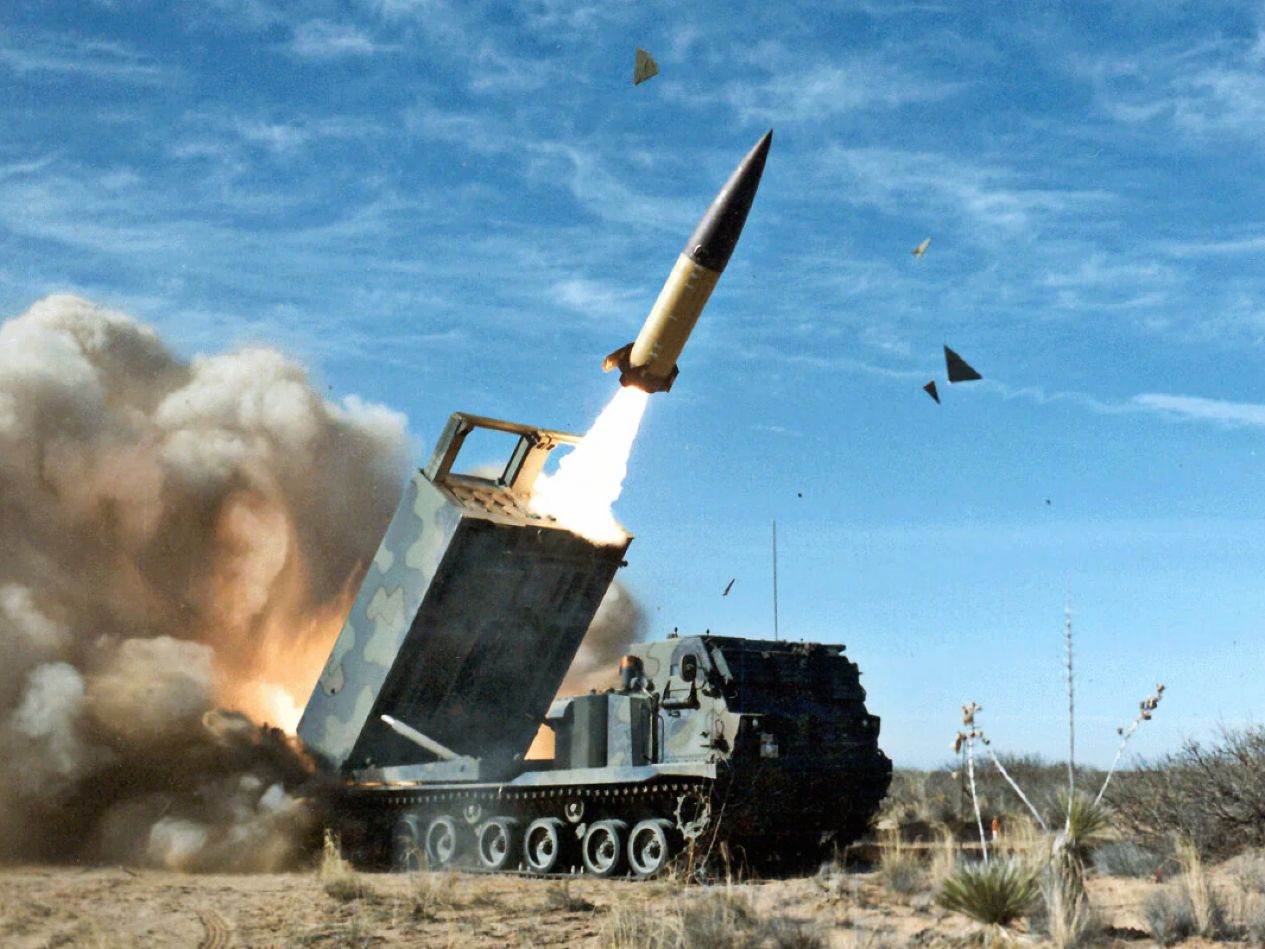The US Army announced on December 8 that it had secured the delivery of the first batch of precision strike weapons, the service’s new short-range ballistic missiles that will start replacing the Army Tactical Missile System (ATACMS).
US Slams China’s ‘Aggressive’ Actions In SCS After Chinese Coast Guards Blast Water Cannons On Filipino Vessels
The statement read, “The delivery of the Precision Strike Missile Increment 1 Early Operational Capability missiles follows successful production qualification testing in November at White Sands Missile Range, New Mexico.” The delivery of the missile is significant as the PrSM program was one of the 24 major modernization programs undertaken by the service.
The Army stopped short of specifying the number of missiles it had received. However, it stated that these weapons offer an early operational capability before an initial delivery slated for next year. The Army estimates the current unit cost of each of these missiles to be slightly under US$3.5 million for the 2024 Fiscal Year budget proposal.
The development comes less than a month after a “successful” short-range test of the weapon in mid-November at White Sands Missile Range in New Mexico, as announced by the service and the prime contractor.
Doug Bush, assistant secretary of the Army for acquisition, logistics, and technology, said, “The Precision Strike Missile will provide Joint Force commanders with a 24/7, all-weather capability that will counter the enemy’s ability to conduct combat maneuver and air defense operations.”

Earlier, a promotional video of the missile released by manufacturer Lockheed Martin showed that the missile design resembled the existing ATACMS it seeks to replace. Moreover, reports stated that the service would receive 54 systems by September 2025.
The contract for the PrSM was signed last year, but it wasn’t sure whether the Biden Administration would send the ATACMS to Ukraine amid growing calls from Kyiv’s officials. However, Ukraine finally acquired and fielded the long-range missile in October.
On its part, the ATACMS has continued to remain in headlines, especially in the wake of some surprise attacks carried out by Ukrainian forces with this 300-kilometer-range missile that rattled the Russians. After the rocket was used for the first time, Ukrainian President Volodymyr Zelensky declared that the weapons had “proven themselves.”
In its intelligence update posted on X (formerly Twitter), UK Defense Intelligence said on October 17, following ATACMS strikes on Russian military airfields in the occupied cities of Berdiansk and Luhansk, that it was highly likely that “multiple” helicopters and air defense systems were rendered inoperable or destroyed.
The ATACMS has thus proved its combat prowess in the longest-running conflict of recent times, with experts suggesting that it has tilted the balance in Ukraine’s favor by giving it the much-sought long-range strike capability in the absence of other platforms like the F-16 fighter jets.
PrSM For US Army Bolstering Combat Capability And How!
As part of the Army’s new wave of modernization goals announced in 2017, PrSM has been a top program and a critical piece of technology within the service’s long-range precision firing portfolio.
The new PrSM will be crucial for the US Army’s quest for a deep-strike capability to counter Chinese and Russian technologies. American commanders stationed in Europe and the Indo-Pacific region have shown a strong desire to acquire long-range strike capabilities.
The Army has stated that the PrSM’s warhead is “optimized” and “designed to achieve the same effects as ATACMS,” even though there are few specifics regarding its nature and size. PrSM appears to provide the Army with a significant increase in long-range striking capacity overall. The service has already plans to add more features and upgrades to its current variations and derivatives.
Unlike the ATACMS, it has only one launcher with two large launching tubes instead of the single one used for the ATACMS. According to Lockheed Martin, it has an open network architecture and is easily adaptable.
The new PrSM that has entered service with the US Army has a range more significant than the ATACMS. The Army has so far only stated that PrSM has a maximum range of at least 400 kilometers without providing a precise range. However, a declassified Pentagon Selected Acquisition Report (SAR) on the program made public earlier this year shows that it is closer to 500 kilometers with the potential to reach 650 kilometers.
Moreover, like the ATACMS, the PrSM is intended to be fired from the current wheeled M142 High Mobility Artillery Rocket System (HIMARS) launchers and tracked M270-series Multiple Launch Rocket System (MLRS) launchers. Up to four PrSMs can be simultaneously loaded into a single M270, compared to two PrSMs at most for the M142.
The Army currently uses primary Increment 1 variants of PrSMs, which carry a unitary high-explosive warhead. Although the missiles are precision-guided, they are solely meant to attack stationary targets.

The Increment 2 missiles are expected to include a multi-mode seeker and the ability to engage targets in motion. The present development focuses on this version for anti-ship applications, although it may also be applied to other target sets. The service plans to develop and induct increments of 3 and 4 missiles under the program.
The US Army has been able to create a missile that can travel farther thanks to America’s exit from the Intermediate-Range Nuclear Forces Treaty with Russia early in 2019. The development of rockets with a range of 499–5,000 kilometers had been banned under the treaty
- Contact the author at sakshi.tiwari9555 (at) gmail.com
- Follow EurAsian Times on Google News




